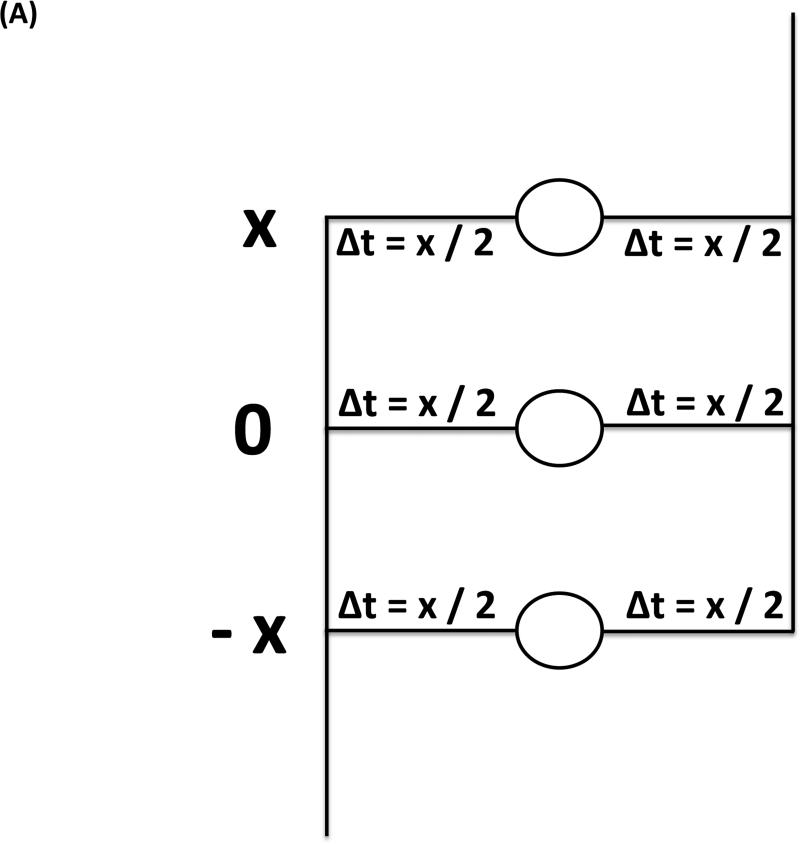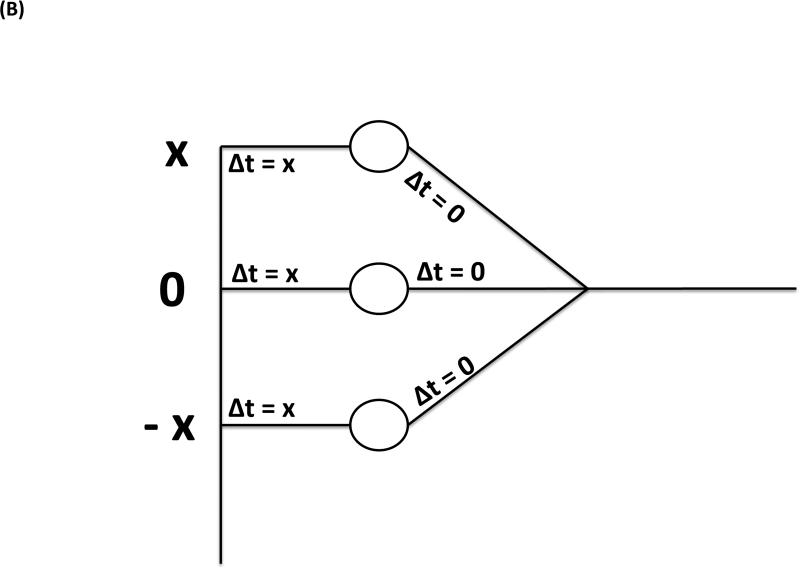Figure 5.
Circuit underlying the generation of the BIC based on neurons integrating excitatory inputs from both sides. A, Circuit representing the classical Jeffress model with two symmetrical delay lines: due to symmetric contributions of the input from both sides, the DN1 component will show a latency shift of ΔITD/2 with an increase of ΔITD. B, Circuit representing a modification of the Jeffress model with unilateral delay lines: due to the contribution of only one side to the delay, the DN1 component will show a latency shift of ΔITD with an increase of ΔITD (For in depth discussion see Ungan et al. 1997).


